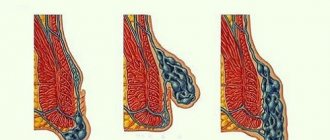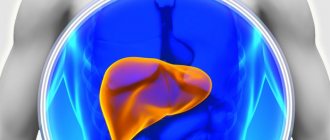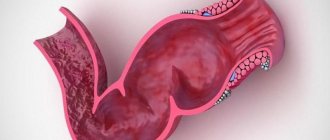Major liver diseases
Liver diseases are represented by various types of damage to structures that do not go beyond the anatomical limits of the organ in question. Liver diseases are talked about even when the bile ducts, hepatocytes, liver lobules, intrahepatic arterial and venous vessels are affected.
Among the primary inflammatory, functional, purulent lesions of liver cells, the following are distinguished:
- fatty hepatosis;
- toxic hepatitis;
- viral hepatitis;
- alcoholic, non-alcoholic steatohepatosis;
- hepatomegaly of unspecified origin;
- liver abscess;
- syphilitic, tuberculous liver damage.
Vascular diseases include:
- pylephlebitis;
- hepatic vein thrombosis;
- arteriovenous fistulas, fistulas (intrahepatic);
- portal hypertension.
The following traumatic injuries are distinguished:
- firearms;
- open (stab wounds);
- organ crushing;
- organ rupture due to blunt closed abdominal injuries.
The following diseases of the intrahepatic ducts have been identified:
- Caroli's disease;
- intrahepatic cholestasis;
- chronic cholangitis;
- acute cholangitis;
- cholelithiasis (intrahepatic).
Let's consider parasitic infestations and infections:
- leptospirosis;
- alveococcosis;
- opisthorchiasis;
- ascaridiosis;
- echinococcosis.
Let us describe tumor diseases:
- intraductal cancer;
- hemangioma;
- liver cyst;
- angiosarcoma, different types of sarcoma;
- metastatic damage to an organ due to cancer that is localized in nearby organs;
- hepatocellular carcinoma.
Liver lesions that are observed in pathologies of other organs are as follows:
- amyloidosis;
- congestive liver;
- renal and hepatic failure.
There are different types of hereditary pathologies and anomalies:
- hemochromatosis;
- hypoplasia, organ aplasia;
- fermentopathy + copper metabolism disorder;
- pigmentary hepatosis;
- atresia of intrahepatic vessels, ducts;
- fermentopathy + disorder of bilirubin metabolism.
Let's note autoimmune liver diseases:
- hepatitis (autoimmune);
- biliary cirrhosis of the liver (primary);
- sclerosing cholangitis (primary).
Structural and functional rearrangements of the organ and their complications are considered very dangerous:
- hepatic coma;
- liver failure;
- cirrhosis of the liver;
- parenchymal jaundice.
Special manifestations of symptoms of the disease in men
Signs of liver disease in men have their own characteristics. Thus, in representatives of the stronger sex, changes in the synthesis of hormones are more pronounced. This is especially true for alcoholic liver disease in men. In men who suffer from alcoholic and viral cirrhosis, feminization occurs in 80% and 15%, respectively.
Alcohol is an activator of the transformation of male hormones (testosterone, androgen) into female hormones (estrogens). For this reason, the following changes occur in the body of men:
- impotence;
- gynecomastia (breast enlargement in men);
- the testicles atrophy;
- there is a change in the type of hair growth;
- libido disappears.
With the development of certain liver diseases, there is an increase in parathyroid hormone and its derivatives, which affect bone structures:
- spontaneous fractures;
- bone pain;
- bone deformities. They are most often seen on flat bones.
Intoxication of the body
The liver is located in the right hypochondrium and has a mass of about 1500 g. The organ consists of the right and left lobes. The right one, in turn, is also divided into 2 lobes: caudate and quadrate. In general, it is customary to conditionally divide the organ into 8 segments, each of which has its own supply of blood, nerves and bile outflow.
Human liver
Venous and capillary blood is supplied to the organ, and there are 3 stages of this process:
- blood supply to the lobules;
- blood circulation inside them;
- outflow of blood.
to the liver The main functions of the liver include:
- Production of hormones and enzymes necessary for the digestion and absorption of food.
- Storing a blood supply that is used in case of significant blood loss.
- Production of bile and bilirubin.
- Accumulation and storage of vitamins and microelements necessary for the body: metals, folic acid, nicotinic acid, vitamins A, B, C, D, E.
- Accumulation and storage of glycogen reserves, which the body may need during high energy expenditures.
- Gluconeogenesis is the conversion of fatty acids, amino acids, lactic acid, glycerol into glucose, which can provide the body's energy needs.
- Neutralization of poisons, toxins, allergens, waste, which can be converted into less dangerous and easier to remove compounds.
- Neutralization of excess hormones, vitamins, metabolic products.
Basic liver functions
In the fetus, which is still in the womb under the protection of the placenta, the detoxification function of the liver is not so pronounced, but the organ is involved in hematopoiesis.
Occurs against the background of viral liver diseases, in particular hepatitis. Also, the cause of toxic damage can be oncological processes and complications arising from cirrhosis. Symptoms are often diffuse in nature and are expressed by the following signs:
- muscle weakness;
- lack of appetite accompanied by weight loss;
- general depressed state;
- nausea;
- mood swings, feeling of inner “brokenness”;
- sudden changes in temperature;
- joint pain.
Often the provocateur of intoxication is prolonged use of anti-inflammatory, antihistamine, painkillers, as well as sleeping pills and antibiotics.
Main symptoms
Liver damage is usually accompanied by the following symptoms:
- yellowing of the dermis;
- sweat acquires a very unpleasant, pungent odor;
- nausea;
- diarrhea;
- acquisition of a dark yellow color in urine;
- heartburn;
- acquisition of dark brown, light brown, green color by feces.
Acne may occur with liver disorders. Severe hunger, thirst, itching in areas with thin dermis, and blurred vision may also occur. There may be a sharp change from heat to cold and vice versa, deterioration of sleep, increased heart rate. In some cases, hair loss, eyebrow loss, the appearance of seizures, atherosclerosis of the brain, intestines, heart, blood vessels of the legs, and papillomas are observed.
The difficulty of diagnosing liver pathology depends on the specific type of disease. The individuality of the body and the presence/absence of concomitant pathology also play a huge role. Symptoms of the disease manifest themselves differently in different patients.
Liver pathology usually manifests itself as follows:
- increase in organ size;
- discomfort, pain in the area where this organ is located;
- headache;
- general weakness;
- increase in abdominal size;
- yellowness of the dermis, sclera;
- disturbance of mental and mental work;
- hypovitaminosis;
- excessive sweating, swelling;
- stool instability;
- rash on the dermis;
- itching of the dermis;
- bitterness in the mouth;
- weight loss;
- fragility of blood vessels, bleeding;
- coated tongue (white, brown);
- temperature;
- manifestation of an enhanced venous pattern on the abdomen;
- cracks in the tongue.
Nervous system response
Since the liver belongs to the list of organs of the gastrointestinal tract, the development of any pathology will certainly make itself felt by problems with digestion. A person may complain about:
- change in urine color;
- stool discoloration;
- heartburn and nausea;
- constipation/diarrhea
The patient also experiences bad breath, a feeling of heaviness in the abdomen and discomfort in the right hypochondrium. Almost always, symptoms are accompanied by an increase in waist circumference, as fluid begins to accumulate in the abdominal cavity.
With liver diseases, certain nervous disorders may occur, in particular:
- rapid fatigue even with minimal physical activity;
- chronic malaise, loss of strength;
- weakening of memory, inability to concentrate, difficulties in formulating one’s thoughts;
- tremor of fingers;
- state of drowsiness, mute and insomnia at night.
Features of the manifestation of pain in pathology
Pain in various pathologies of the organ we are considering is of a unique nature. They can be like this:
- Intense. This type of pain manifests itself in the area of the right hypochondrium. They appear in rare cases. Their occurrence indicates a purulent, inflammatory, traumatic process, injury to the bile ducts by stones.
- Minor pain. They usually appear in the area of the right hypochondrium, similar to aching pain, a feeling of heaviness, and fullness. Their appearance indicates the presence of a sluggish pathological process that has a toxic or other origin. Pain usually provokes an increase in the size of the organ and overstretching of the liver capsule.
- Severe pain, which has a local point character in the projection of the liver. It usually indicates pathology of the extrarenal bile ducts and gallbladder.
- Absence of any kind of pain. It is characteristic of indolent diseases of this organ, which can be detected only with the development of cirrhosis and liver failure.
Hepatitis
Types of hepatitis
Specific signs of hepatitis:
- jaundice;
- development of encephalopathy;
- stomach and intestinal bleeding;
- formation of palmar erythema;
- worsening blood clotting;
- the appearance of edema;
- itching on the skin;
- abdominal dropsy.
Fluid in the abdominal cavity
During a routine examination, an experienced doctor may, upon palpation, note an enlarged liver, which is a reason for a thorough examination.
There are 3 stages of development of acute hepatitis, each of which has its own manifestations.
- Yellowish. There is a feeling of depression, reluctance to do anything, perhaps a sore throat, a runny nose, and in rare cases, pain in the joints. This condition can easily be confused with the onset of the development of ARVI or influenza.
- Icteric. Feces become lighter, and urine, on the contrary, takes on a dark tea-colored hue.
- Recovery and transition of the disease to a chronic state. In this case, the person becomes a carrier of the virus.
Chronic hepatitis can have 2 forms: active and persistent.
- In the active form, the symptoms are pronounced, the liver increases in size, eating fatty and high-calorie foods leads to cramps and significant pain. The fabric changes its structure.
- The persistent form is accompanied by minor pain in the hypochondrium and slight enlargement of the organ. With this form, the disease does not transition to cirrhosis.
Stages of chronic hepatitis
Itching, rash
In addition to changes in the shade of the dermis, most people with liver pathologies experience various rashes. Let's consider the features of the mechanism of occurrence and types of rash:
- Allergic rash. It is like spots, papules. The occurrence of this symptom is due to disruptions in the detoxification function of the organ in question. These failures underlie allergies resulting from environmental exposure.
- Furunculosis, folliculitis, pustular elements. They arise as a result of an imbalance that occurs when the liver’s ability to synthesize immunoglobulins decreases.
- Hemorrhagic rash. Small hemorrhages (petechial rashes) occur over the entire surface of the dermis. The reason for their occurrence is a decrease in the synthetic function of the organ. Violation of this function affects the proteins that are included in the blood coagulation system. For this reason, patients with this disorder have a high tendency to develop hematomas, even with minor injuries.
If you notice some of the listed symptoms, it is recommended to visit a specialist. He will determine the cause that provoked the manifestation of such symptoms.











